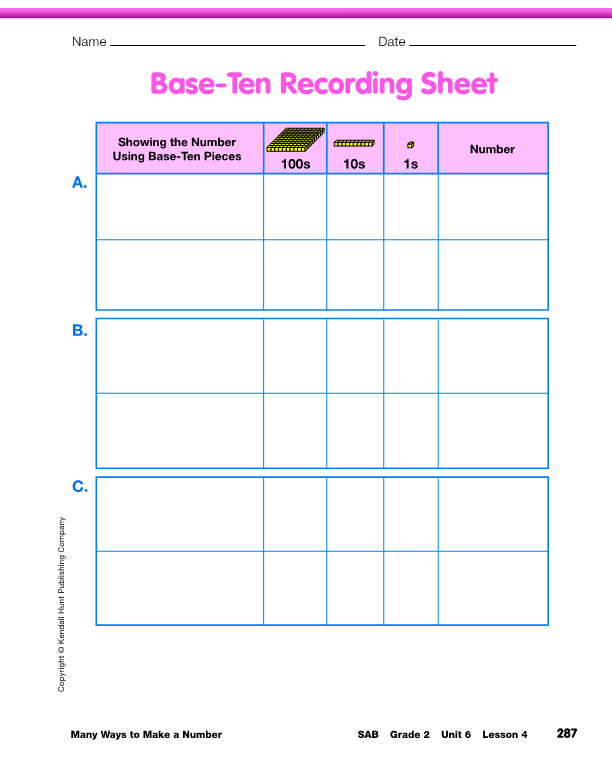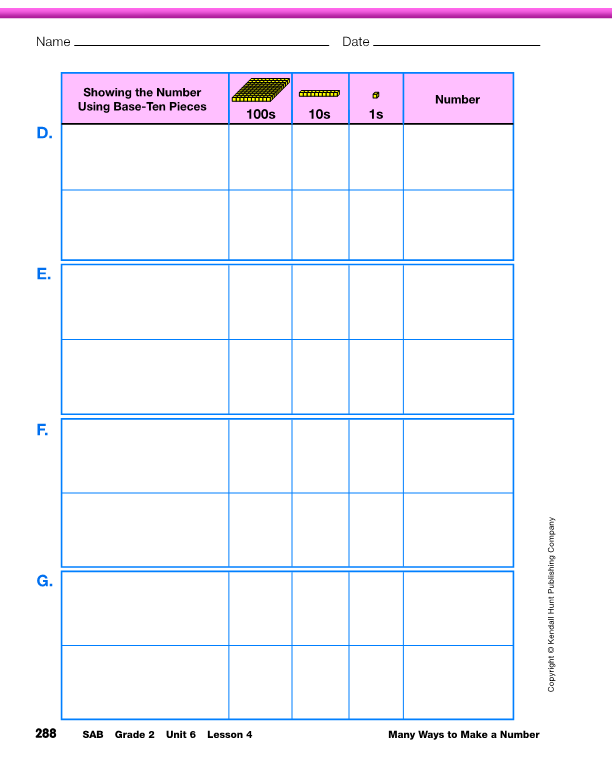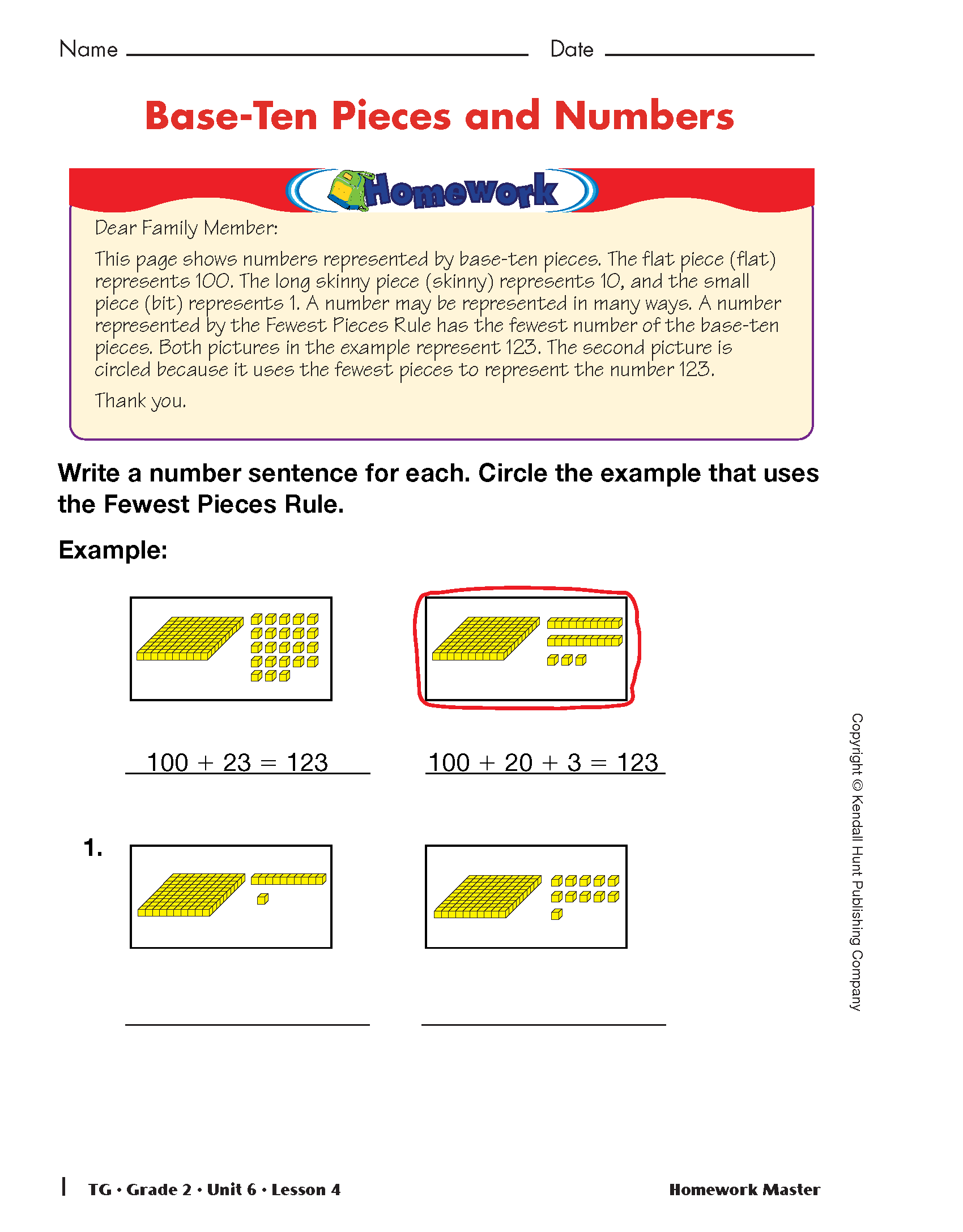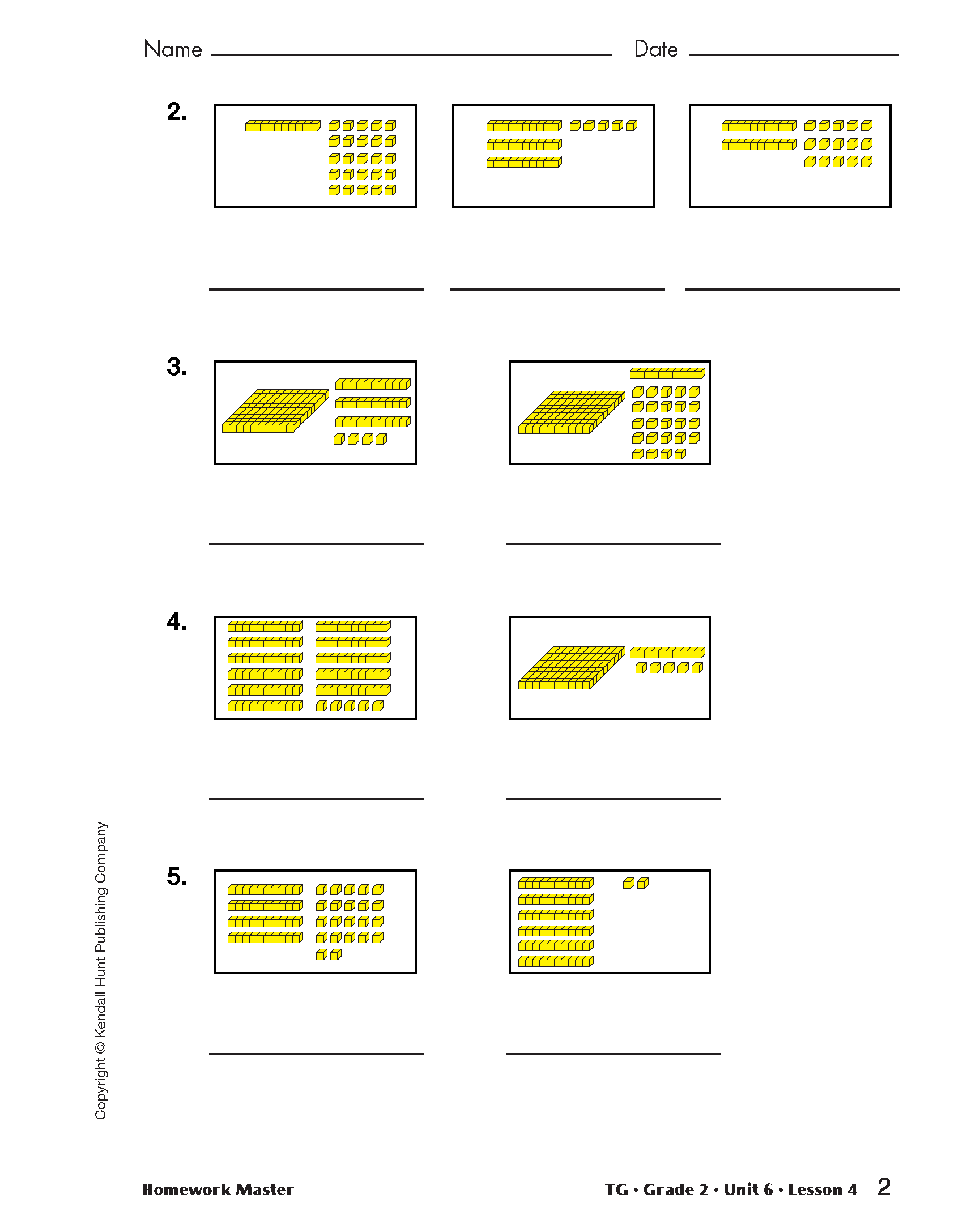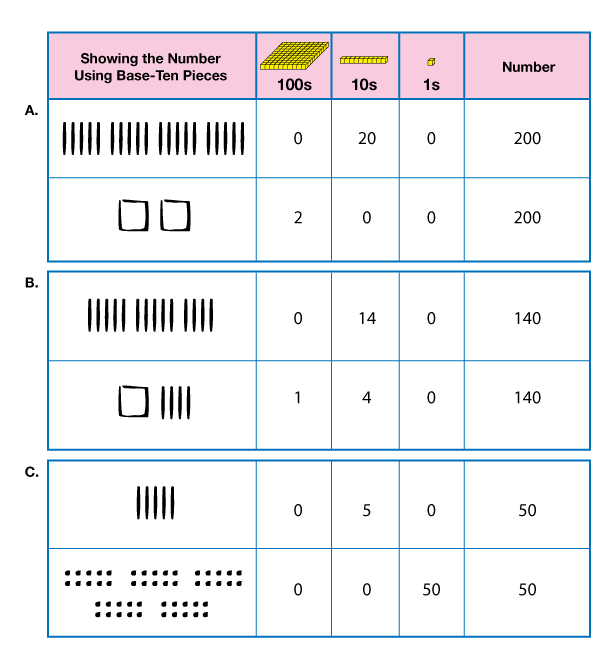Many Ways to Make a Number
Estimated Class Sessions: 2Developing the Lesson
Represent Different Partitions of Numbers. Show a display of the Base-Ten Recording Sheet from the Student Activity Book. Present the problems given below one at a time, or make up similar ones. For each problem, student pairs build a model using their base-ten pieces. They use their models to make trades, fill in the Base-Ten Recording Sheet, and answer questions posed orally. As they answer, fill in the display of the Base-Ten Recording Sheet, using base-ten shorthand to draw the representation. Remind students about using a dot (•) to represent a bit, a vertical line ( | ) to represent a skinny, and a square ( ◻ ) to represent a flat. Work through the first problem as a class.
There is a small space between problems on the Base-Ten Recording Sheet to indicate when a new number is represented. See Figure 1 for an example. The problems gradually increase in difficulty.
Question A:
For the following problems, state the initial problem and give student pairs a few minutes to make their models. They work together to fill in the table for each problem. Then ask the remaining questions and ask students to fill in the table on the display. Have them circle the representation that shows the number using the Fewest Pieces Rule.
Question B:
Question C:
Question D:
Question E:
Question F:
Question G:
Connect Fewest Pieces to Place Value. Continue with similar problems for as long as seems appropriate or necessary so that your students have many opportunities to practice representing partitions of numbers and making trades. Help them to begin to see the advantage of representing a number using the Fewest Pieces Rule.
Ask:
Represent 134 and 175. Have students complete the 134 and 175 page in the Student Activity Book in pairs. When they have completed the page, have them discuss their representations of the two numbers. See the Sample Dialog.
Assign the Base-Ten Pieces and Numbers Homework Masters.














